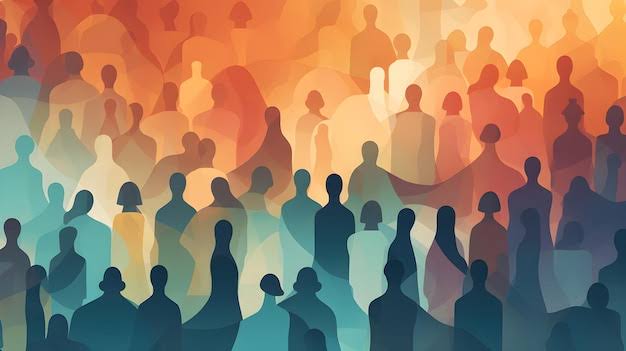
The grinding stone never stopped. Five centuries ago, Kabir stood in the dust of Varanasi and wept for a world torn by ego and illusion. Today, the same stone spins faster—only now, it is powered by politics. Between the crushing weight of state and opposition, of hatred masked as nationalism and fury dressed as secularism, India’s soul is splintering. This is not merely a political crisis—it’s a spiritual one too. As the battle rages for the nation’s identity, the question looms: who will speak for the people, not just their vote? And can love still be louder than fear?
Nalin Verma’s column in ‘Everything Under The Sun continues’. This is the 10th article in the column.
Chalti Chakki Dekh Ke, Dia Kabira Roi
Do Patan ke Beech mein Sabut Bacha na Koi
(Seeing the grinding mill at work, Kabir weeps in dismay.
Between two stones, nothing remains whole—all is crushed away.)
Over five centuries ago, Saint Kabir Das sang these lines on the streets of Varanasi—a lament for humanity ensnared by kaam (lust), krodh (anger), mad (arrogance), and lobh (greed), blinded by maya (illusion). The two stones of his metaphor—the material world and the ego—grind the soul down to fragments, leaving nothing intact.
Today, in an India of 1.4 billion people, Kabir’s couplet echoes with haunting urgency. The common people—farmers, workers, tyre puncture repairers, students, Dalits, Muslims, Christians, Tamils, and countless others—are caught between a new set of millstones: the ruling Bharatiya Janata Party (BJP) under Narendra Modi’s stewardship, wielding a divisive Hindutva agenda, and an opposition—comprising the Congress, the Left, and the Socialists—posturing as guardians of secularism and the Constitution.
Both sides seem consumed by anger and arrogance, while India’s rich, diverse fabric is being relentlessly torn apart by the binary of Hindu versus Muslim. Redemption appears distant as toxicity spreads deep into the body politic of Bharat Mata.
The First Stone: Hindutva’s Relentless Grind
The BJP under Modi continues to stoke communal fires as a means to consolidate power. Its ideological parent, the Rashtriya Swayamsevak Sangh (RSS), along with affiliates like the Vishva Hindu Parishad (VHP) and Bajrang Dal—often with militant cadres—amplify the vision of Hindutva, or what they now call Sanatan, marginalizing minorities and threatening India’s pluralistic soul.
In Murshidabad, West Bengal (April 2025), communal riots erupted following protests against amendments to the Waqf Act, leaving three dead and hundreds displaced. BJP leaders such as Sukanta Majumdar framed the violence as “Hindu persecution,” despite police refuting these exaggerated claims. In Nagpur, Maharashtra (March 2025), VHP protests over Aurangzeb’s tomb spiraled into riots, with reports of a Quranic chadar being burned—deepening communal fault lines.

In Agra, Karni Sena cadres paraded ominously with swords, hatchets, and guns, attacking Banaras wale Mishra ji, all under the pretext of honoring 16th-century Rajput king Rana Sanga. This spectacle revealed how historical figures and events are being weaponized to incite chaos in modern India.
Manipur continues to reel from ethnic-communal violence, displacing over 70,000 since 2023—a chilling testament to the BJP’s indifference to a festering humanitarian crisis. In Tamil Nadu, fears of Hindi imposition fuel protests against perceived cultural erasure, as Hindutva’s drive for uniformity threatens Dravidian identity.
In such a climate, the Prime Minister, who ought to be a voice of calm and compassion, appears angrier than ever. His alter ego, Union Home Minister Amit Shah—rarely associated with consensus or sobriety—seems only to stoke the flames.
Together, Modi and Shah have pushed through policies like the National Register of Citizens (NRC), the Citizenship Amendment Act (CAA), and the Waqf Act amendments—each reinforcing the perception of systemic bias against minorities.
In a recent justification of the Waqf Amendment Act, Modi remarked: “Had the Waqf properties been utilized properly, Muslims might not have been repairing punctured tires on the streets.”
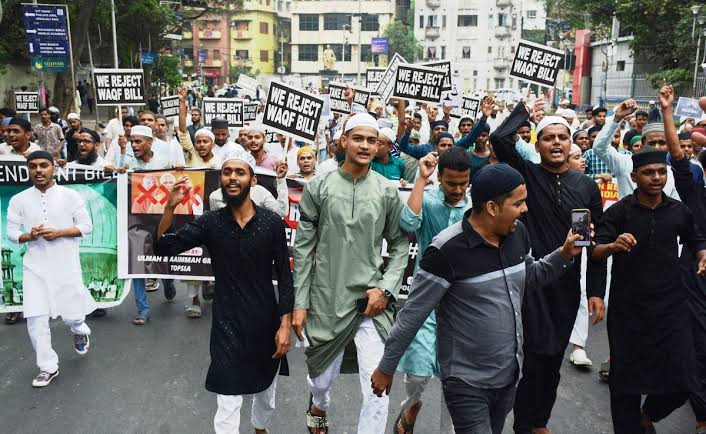
More than anything, this crude statement betrays his disturbing ignorance of Indian society. The reality is that puncture repair—a necessary and dignified skill—is performed by people across communities, offering livelihoods to thousands.
Communal riots surged by 84% in 2024, with 59 incidents—49 in BJP-ruled states—claiming 13 lives (10 Muslims, 3 Hindus). The grind of this stone spares no one, disrupting livelihoods and shattering communities.
The Second Stone: The Opposition’s Reactive Fury
The opposition—Congress, the Left, and regional socialists—claims to be the last line of defense for India’s secular Constitution. Rahul Gandhi routinely criticizes the RSS for betraying the ideals of the freedom struggle, citing caste atrocities like the Hathras case, where Dalit women faced rape and murder, and upper-caste perpetrators allegedly enjoyed impunity. According to National Crime Records Bureau data, the toll is grim: every day, three Dalit women are raped, two Dalits murdered, and eleven assaulted. In Prayagraj and beyond, Dalit communities continue to endure systemic and brutal violence.
Yet, Rahul Gandhi often appears more as an angry young man than a unifying statesman. The opposition’s fury increasingly mirrors the rage of the BJP. While Congress’s rhetoric may be rooted in pluralism, it frequently fails to transcend the Hindu-Muslim binary, missing the opportunity to project a broader vision of justice and harmony. The much-needed tone of love, sobriety, and compassion—one that could soothe wounds and unite people under the sheltering shade of peace—is conspicuously absent.
Mamata Banerjee, meanwhile, sounds angrier than most. Her government in West Bengal failed to contain the riots in Murshidabad, and her appeals were quickly drowned in accusations of Muslim appeasement.
The opposition has failed to formulate a strategy capable of breaking the cycle of chaos and confrontation. As a result, despair stretches from east to west, north to south. The common people—already battered by the ruling regime—are now crushed between the second grinding stone of an ineffective and reactionary opposition. It may well be one of the most distressing phases in post-Independence India.
The Media’s Binary Trap
India’s media—social, digital, electronic, and print—fuels this polarization further. Coverage of events like the Murshidabad and Nagpur riots is reduced to sensationalist soundbites, prioritizing spectacle over substance. Social media, governed by opaque algorithms, amplifies unverified claims: BJP leaders push incendiary narratives, while opposition-aligned platforms respond with counter-narratives of their own. Lies and misinformation spread cheaply and quickly in this digital age, while truth—often inconvenient and painful—is drowned out or ignored.
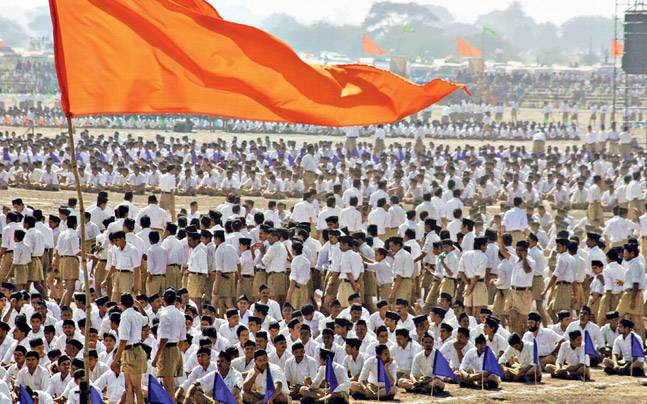
Caught in the Hindu-Muslim binary, the real struggles of India’s people are erased: farmers battling agrarian distress, workers grappling with joblessness, students navigating a bleak and opportunity-starved future. India’s cultural diversity—from Tamil Nadu’s fierce linguistic pride to Manipur’s fragile ethnic coexistence—is flattened into a simplistic communal conflict. The average citizen is left voiceless, disoriented, and helpless—unsure where to turn or whom to trust.
India’s 1.4 billion people form a vibrant mosaic: farmers, professionals, Dalits, tribals, Muslims, Christians, Sikhs, Tamils, Manipuris, and more. Yet, the millstones spare no one. In Karnataka, a Muslim youth in Chikhodra was beaten to death—for the ‘crime’ of excelling in cricket. This tragic act stands as a chilling symbol of rising intolerance. Over 10,000 farmers continue to take their lives each year. Economic uncertainty deepens. Cultural identities, from Tamil Nadu’s Dravidian legacy to Manipur’s pluralism, face steady erosion. The dreams of ordinary people—for dignity, security, and opportunity—are being pulverized under ideological warfare.
Myriad Kabirs: A Call to Heal
Kabir, the 15th-century weaver-poet, was a recluse and wanderer. Legend has it that he once cured a life-threatening illness of Sultan Sikandar Shah Lodi with his touch and blessings. When offered wealth and comfort in return, Kabir smiled gently and declined, walking away singing: “Jo ghar jaare aapna, chalo hamaar-e saath” (Those whose homes are burned, walk with me). He stood with the dispossessed and healed through compassion.
But Kabir is long gone. So are Nanak, Gandhi, and Jayaprakash Narayan. It would be naïve to expect their return to rescue us. Instead, India today needs myriad Kabirs—grassroots leaders from every community who can bridge the divide and offer the balm of love, humility, and truth.
There are flickers of hope. Organizations like the Centre for Study of Society and Secularism, and interfaith initiatives by the People’s Union for Civil Liberties, continue to track violence and foster dialogue. But now, each fractured society must nurture its own Kabirs, Nanaks, Gandhis, and JPs—healers who reach across walls with a touch, a song, a word of kindness.

The burden of change rests with the people. It is they who must become the Kabirs of this age—rejecting binaries, breaking the grindstones, and choosing the difficult path of unity.
Only myriad Kabirs — ordinary yet extraordinary — can heal India’s open wounds, burning the house of division so we may walk together into a future rooted in pluralism, compassion, and peace. This column is a small effort in igniting the bond of love and unity among the people.


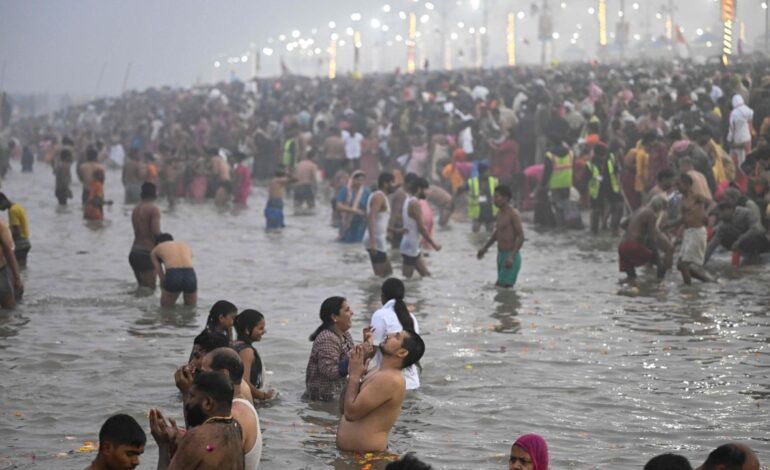

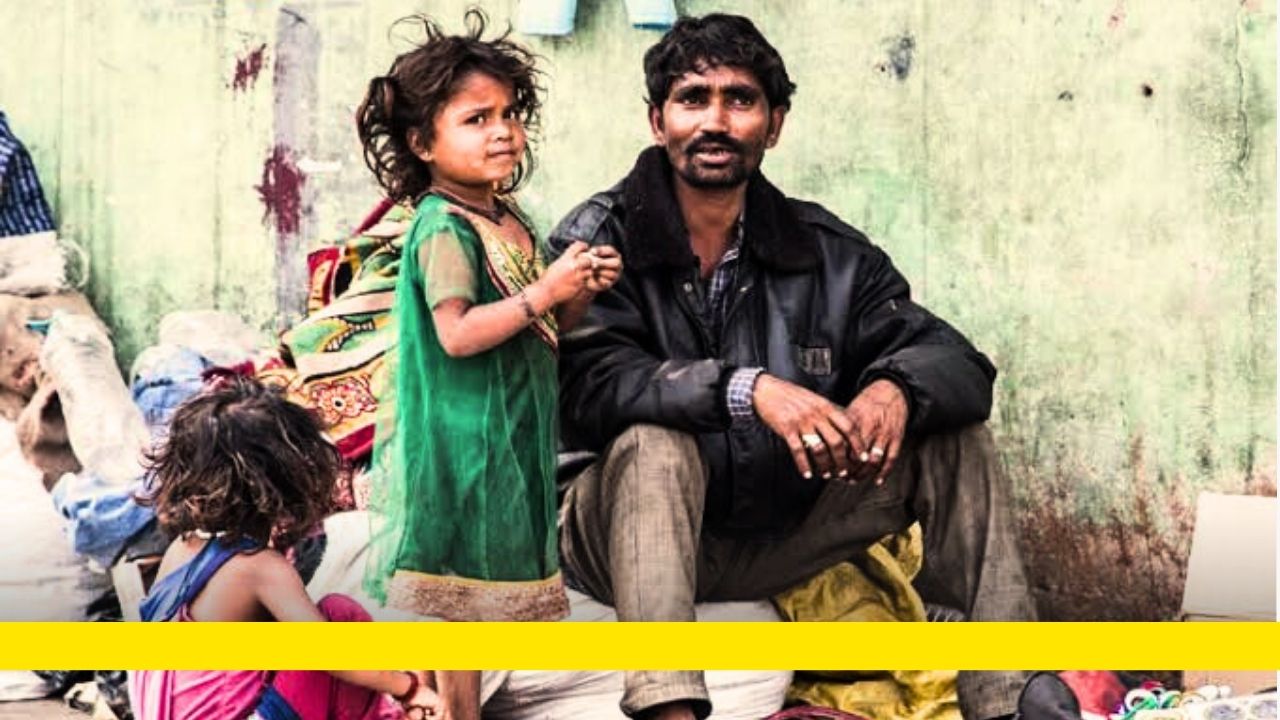
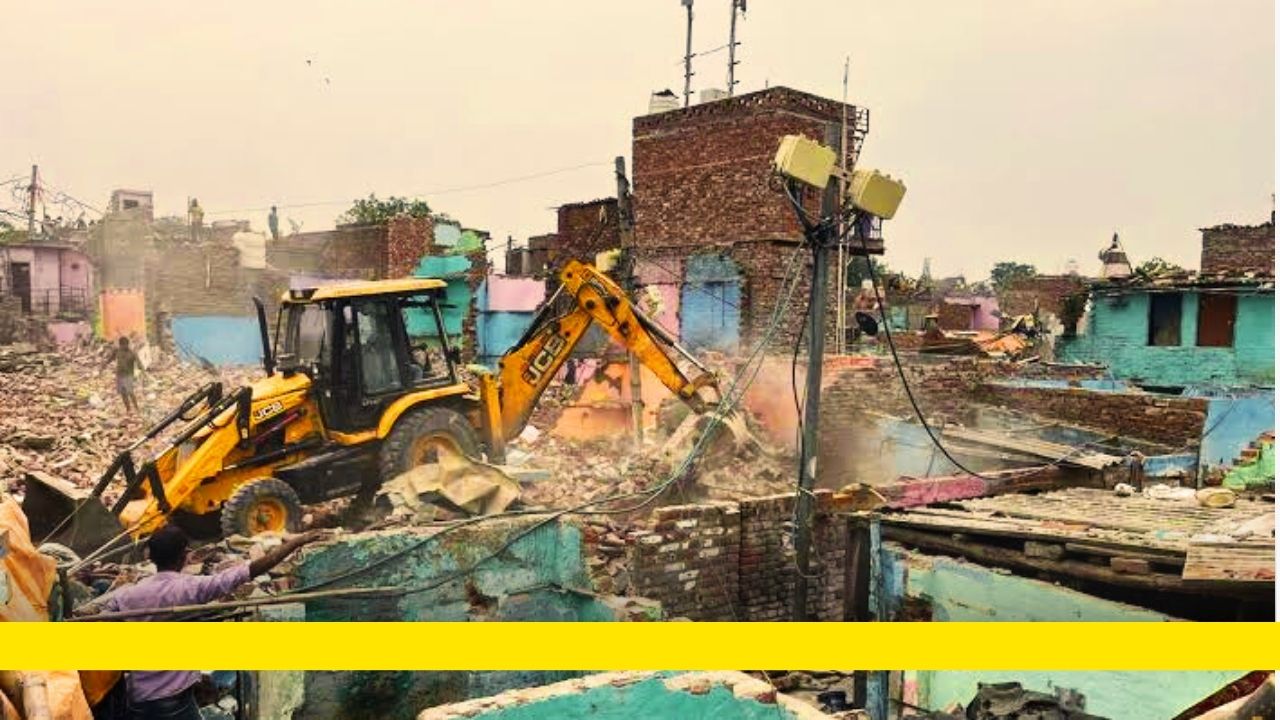




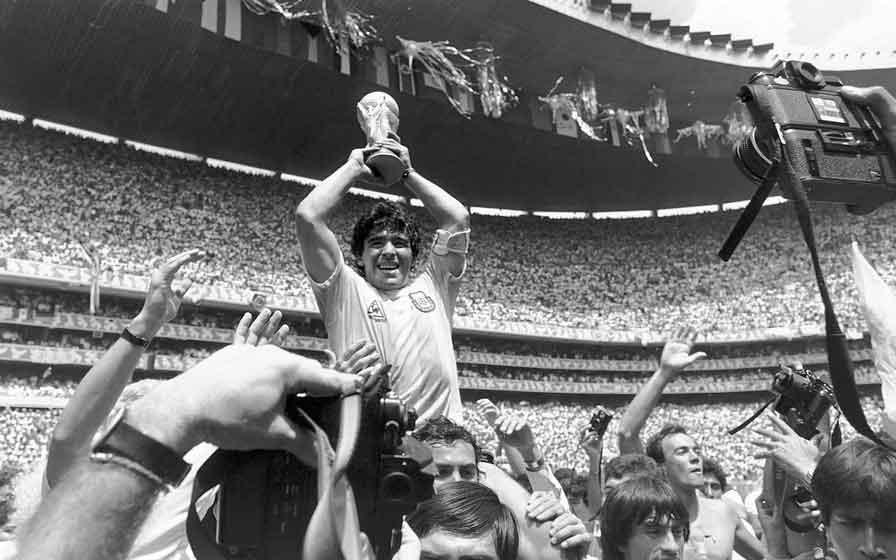

Such a beautiful and thoughtful piece of writing Sir! Though I too am sometimes consumed by some amount of hate and disdain but reading this made me believe otherwise!! It made me realise there is a different path which exists and it’s different from the conventional political binery!! Such a dream is exactly the need of this time and everyone needs to inculcate this in their heart and mind.